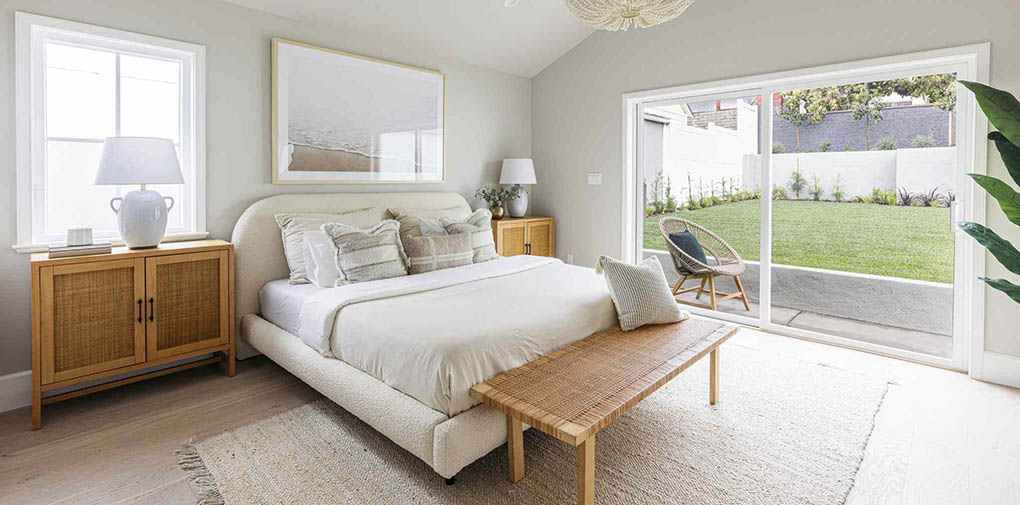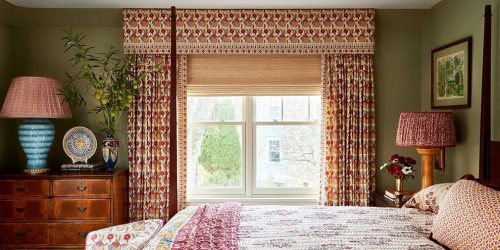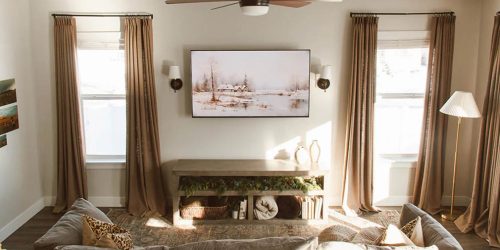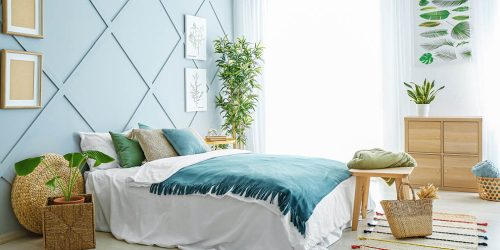The Best Bedroom Paint Colors for a Restful Night’s Sleep
Creating a bedroom that promotes relaxation and restful sleep begins with choosing the right paint colors. The color of your bedroom can significantly influence your mood, stress levels, and overall sleep quality. With so many options available, it’s essential to understand how different hues can impact your sleep environment.
Understanding the Impact of Color on Sleep
Color psychology suggests that different colors can evoke various emotions and physiological responses. For the bedroom, which serves as a sanctuary for rest and relaxation, the goal is to choose colors that promote calmness and tranquility. Here’s how specific color families affect our mood and sleep:
- Cool Colors: Blues, greens, and purples are known for their calming effects. These colors can lower heart rates and blood pressure, making them ideal for promoting relaxation and sleep.
- Warm Colors: Reds, oranges, and yellows are stimulating and energizing. While they can be great for other areas of the home, they might not be the best choice for a bedroom where the goal is relaxation.
- Neutral Colors: Whites, beiges, and grays offer a more subdued palette that can create a peaceful environment. They provide a versatile backdrop that pairs well with various accents.
Top Paint Colors for a Restful Night’s Sleep
1. Soft Blue
Soft blue is often considered one of the best colors for a bedroom. It mimics the serene qualities of the sky and sea, creating a sense of calm and tranquility. Studies have shown that blue light has a calming effect on the mind and body, which can help lower blood pressure and heart rate.
Application Tips
- Shades: Opt for lighter shades of blue, such as powder blue or sky blue, to avoid overwhelming the space.
- Complementary Accents: Pair soft blue with neutral tones like white or beige for a balanced look. Adding natural textures, such as wooden furniture, can enhance the calming effect.
- Room Size: Soft blue works well in both small and large rooms, making it a versatile choice for any bedroom size.
Personal Experience
During my recent visit to a friend’s newly painted bedroom, the soft blue walls immediately set a tranquil tone. The room felt refreshing and spacious, contributing to a genuinely restful atmosphere. The blue hue blended beautifully with white furniture and light wooden accents, creating a serene retreat.
2. Gentle Green
Green is another excellent choice for a bedroom. It represents nature and renewal, promoting relaxation and reducing stress. Gentle greens, such as sage or mint, can create a soothing atmosphere that encourages restful sleep.

Application Tips
- Shades: Choose muted greens to avoid overpowering the room. Sage green or seafoam green are particularly effective.
- Complementary Accents: Combine green with natural elements like wooden or rattan furniture to emphasize the calming, nature-inspired theme.
- Room Size: Green can make a room feel cozy and inviting. It’s especially effective in bedrooms with natural light.
Personal Experience
I stayed in a vacation rental with gentle green walls, and it was incredibly calming. The green complemented the natural surroundings outside, creating a harmonious and restful environment. The room felt both invigorating and peaceful, ideal for a good night’s sleep.
3. Soft Gray
Soft gray is a neutral color that creates a serene backdrop, perfect for a bedroom. It’s versatile and pairs well with a range of colors, allowing you to easily switch up your décor without needing to repaint.
Application Tips
- Shades: Stick to lighter shades of gray, such as dove gray or cloud gray, to maintain a soft and inviting atmosphere.
- Complementary Accents: Combine gray with muted colors like soft blue or beige to keep the space from feeling too sterile. Adding textures such as plush rugs or throws can make the room feel warmer.
- Room Size: Gray can make both small and large bedrooms feel calm and spacious.
Personal Experience
In a modern apartment I recently visited, the soft gray walls created a sophisticated yet relaxing environment. The neutral tone provided a perfect canvas for various accent colors and textures, contributing to a comfortable and restful atmosphere.
4. Warm Beige
Warm beige offers a cozy and inviting feel, making it an excellent choice for creating a restful bedroom. It’s a versatile color that can enhance a sense of warmth and comfort without being too stimulating.
Application Tips
- Shades: Opt for warm beige tones that have a hint of brown or cream. Avoid overly yellow or orange beiges, which can be too energizing.
- Complementary Accents: Pair beige with soft greens, blues, or browns to create a harmonious and calming space. Textured fabrics, such as knitted throws or soft linens, can enhance the warmth.
- Room Size: Beige works well in both small and large rooms, providing a cozy and welcoming atmosphere.
Personal Experience
In a beautifully designed boutique hotel room I stayed at, the warm beige walls created a soothing and comfortable environment. The color paired elegantly with soft brown furniture and plush textiles, making it a perfect retreat after a day of exploring the city.
5. Lavender
Lavender combines the calming effects of blue and the soothing qualities of purple. It’s known for its ability to create a peaceful environment that aids in relaxation and sleep.

Application Tips
- Shades: Choose soft lavender or light purple hues to maintain a gentle and soothing atmosphere.
- Complementary Accents: Lavender pairs well with white or gray, adding a touch of elegance without overwhelming the room. Soft, plush fabrics in these shades can enhance the tranquility.
- Room Size: Lavender is ideal for both small and large bedrooms, adding a subtle hint of color while maintaining a serene ambiance.
Personal Experience
I once stayed in a guesthouse with lavender walls, and it was surprisingly calming. The light purple hue added a touch of elegance while creating a peaceful environment that promoted restful sleep. The lavender complemented the white bedding and gray accents perfectly.
Additional Tips for Creating a Restful Bedroom
1. Lighting Matters
The color of your bedroom is just one aspect of creating a restful environment. Lighting also plays a crucial role. Opt for soft, warm lighting rather than harsh, bright lights. Consider using dimmable lamps or sconces to create a calming ambiance in the evening.
2. Avoid Bold Patterns
While color is essential, avoid using bold patterns or busy designs on the walls. They can be visually stimulating and detract from the calming atmosphere you’re aiming to create. Stick to solid colors or subtle patterns that contribute to a serene environment.
3. Incorporate Textures
Adding different textures to your bedroom can enhance its comfort and relaxation factor. Soft bedding, plush rugs, and cozy throws can make the space feel more inviting and soothing.
4. Maintain a Clean Space
A clutter-free environment is essential for a restful sleep. Ensure that your bedroom is organized and free from unnecessary distractions. Consider incorporating smart storage solutions to keep things tidy and reduce stress.

5. Personalize Your Space
Lastly, personalize your bedroom with items that bring you joy and comfort. This could be family photos, artwork, or meaningful objects that create a sense of belonging and tranquility.
Choosing the right paint color for your bedroom is a significant step towards creating a restful and inviting space. Soft blue, gentle green, soft gray, warm beige, and lavender are all excellent choices that can help promote relaxation and improve sleep quality. By combining these colors with thoughtful décor, appropriate lighting, and personal touches, you can transform your bedroom into a peaceful retreat where restful sleep is the norm.





